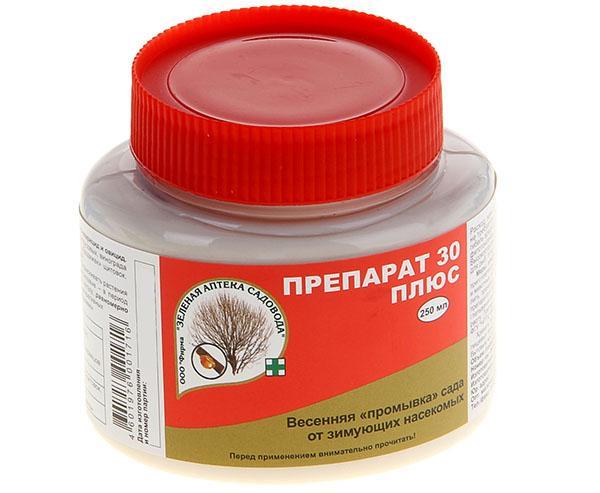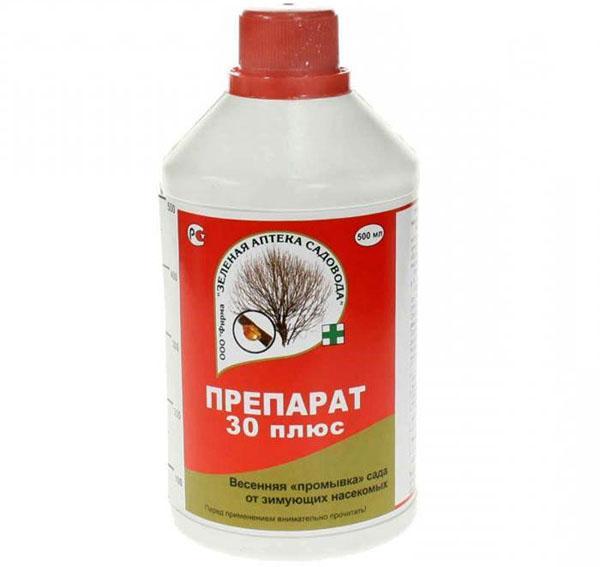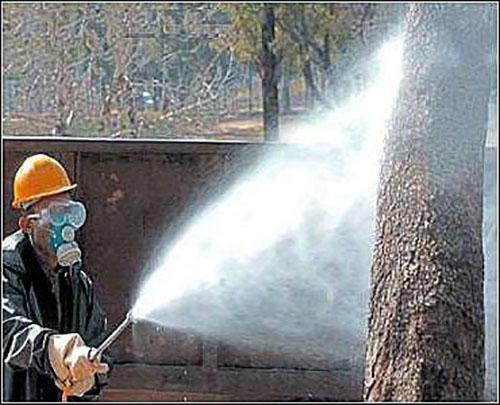Instructions for use of the preparation insecticide 30 plus
 To protect the garden from harmful insects, gardeners cannot do without the use of chemicals. For these purposes, the drug 30 plus an insecticide has proven itself well. The instructions for use contain a complete guide for the gardener. Sprinkling in spring will help keep your plants healthy and keep pests out of your garden.
To protect the garden from harmful insects, gardeners cannot do without the use of chemicals. For these purposes, the drug 30 plus an insecticide has proven itself well. The instructions for use contain a complete guide for the gardener. Sprinkling in spring will help keep your plants healthy and keep pests out of your garden.
The main properties of the drug
The preparation 30 plus insecticide according to the instructions for use is intended for the treatment of fruit trees, shrubs and grapes. The product is made from biological components, environmentally friendly and moderately toxic. Its main feature is protection against wintering insects.
The actions that the insecticide drug 30 plus has on the insect organism:
- acaricide (elimination of ticks);
- ovicide (destruction of eggs and larvae);
- insecticide;
- pesticide.
Release form and mode of action

The death of pests occurs in 6-24 hours, the average period of action is 14 days.
Insects that die when exposed to the drug:
- scabbards;
- ticks;
- false shields;
- aphid;
- mole;
- suckers;
- worms;
- whitefly.
Application procedure
 The preparation 30 plus insecticide according to the instructions for use should be used in early spring, before flowering. This is due to the fact that its active ingredient is a threat to bees.
The preparation 30 plus insecticide according to the instructions for use should be used in early spring, before flowering. This is due to the fact that its active ingredient is a threat to bees.
The substance should be used in the form of an emulsion of 5%, for this the following proportion is used: 500 g of insecticide per 10 liters of water. Usage temperature: above 40C. Plants should be sprayed in dry weather and no wind. During processing, the trunk and branches of the plant should be evenly moistened. The consumption of the substance depends on the size of the tree and the type of spray device.
 Plants that can be treated with insecticide 30 plus:
Plants that can be treated with insecticide 30 plus:
- fruit trees of all kinds;
- grapes;
- berry bushes;
- decorative shrubs;
- citrus.
Precautions and recommendations for use
Insecticide drug 30 plus is a low-toxic substance. However, at a high concentration, it can cause poisoning, and if it gets on the skin and mucous membranes, it can cause irritation. Therefore, when working with it, you should take precautions.
Recommendations for use:
- in early spring - to destroy overwintered pests and clutches of their eggs;
- in the middle of summer - when the scabbard appears, re-processing is carried out.